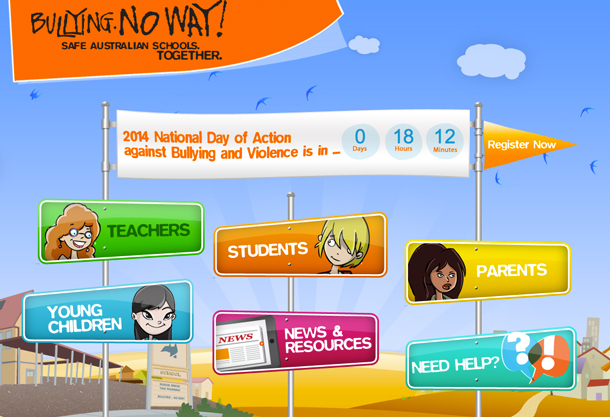VANCOUVER, BRITISH COLUMBIA – Bullying is an issue that far too many children who suffer in silence. The trauma can lead to anxiety, depression, psychotic episodes and even suicide. Sleep might be a hopeful relief, for youth who are under attack from bullies. However now researchers are finding that nightmares are an indication that the trauma of bullying gets to youth even while they sleep.
There may be a way to identify victims of bullying before they experience serious mental health problems, according to a study to be presented Saturday, May 3, at the Pediatric Academic Societies (PAS) annual meeting in Vancouver, British Columbia, Canada.
Researchers from the University of Warwick in the United Kingdom found that nightmares or night terrors were more common in 12-year-olds who had reported being bullied when they were 8 and 10 years old.
“Nightmares are relatively common in childhood, while night terrors occur in up to 10 percent of children,” said lead author Suzet Tanya Lereya, PhD, research fellow at University of Warwick. “If either occurs frequently or over a prolonged time period, they may indicate that a child/adolescent has or is being bullied by peers. These arousals in sleep may indicate significant distress for the child.”
Dr. Lereya and Dieter Wolke, PhD, analyzed data from the Avon Longitudinal Study of Parents and Children, which examined the determinants of development, health and disease during childhood and beyond. Children were enrolled at birth, and 6,438 were interviewed at ages 8 and 10 years about bullying and at age 12 about parasomnias, including nightmares, night terrors and sleep walking.
Survey results showed that at age 12 years, 1,555 (24.2 percent) of children had nightmares, 598 (9.3 percent) had night terrors, 814 (12.6 percent) reported sleep walking and 2,315 (36 percent) had at least one type of parasomnia (nightmares, night terrors and sleep walking).
After adjusting for confounders (e.g., any psychiatric diagnosis, family adversity, IQ, internalizing and externalizing problems, sexual or physical abuse, domestic violence, and nightmares before 8 years), children who were victimized at 8 or 10 years were significantly more likely to have nightmares, night terrors or sleep walking at age 12. Moreover, those who were both a victim and a bully were much more likely to have any parasomnia, but bullies were not at increased risk of a sleep disturbance.
“Our findings indicate that being bullied is a significant stress/trauma that leads to increased risk of sleep arousal problems, such as nightmares or night terrors,” said Dr. Wolke, professor of developmental psychology and individual differences at University of Warwick. “It is an easily identifiable indicator that something scary is being processed during the night. Parents should be aware that this may be related to experiences of being bullied by peers, and it provides them with an opportunity to talk with their child about it.
“General practitioners also should consider peer bullying as a potential precursor of nightmares or night terrors in children,” Dr. Wolke added.
Backgrounder
[1415.6] Can Bullying Become a Nightmare?
Suzet Tanya Lereya, Dieter Wolke. Psychology, University of Warwick, Coventry, United Kingdom.
BACKGROUND: Sleep is partially dependent on the ability to regulate levels of arousal to relax and to reduce awareness of the environment. However, when there is an actual or perceived threat, individuals are likely to remain alert, hyper-vigilant, aroused and primed for action.
Thus bullying victimisation could interfere with sleep. To date there has been very limited research on the association between bullying involvement and sleep problems.
OBJECTIVE: The aim of this research was to investigate the association between bullying status at 8 and 10 years and sleep problems at 12 years.
DESIGN/METHODS: 6438 children from Avon Longitudinal Study of Children and Adolescent (ALSPAC) birth cohort were interviewed at age 8 and 10 about bullying and at age 12 about parasomnias. Multinomial regression analyses were conducted to investigate the association between bullying status and parasomnias. Potential confounders related to bullying and sleeping, (i.e. any psychiatric diagnosis, family adversity, IQ, internalizing and externalizing problems, sexual or physical abuse, preschool parenting, domestic violence, and nightmares before 8 years) were also controlled for.
RESULTS: Overall at 12 years, 1555 (24.2%) of children had nightmares, 598 (9.3%) had night terrors, 814 (12.6%) reported sleep walking and 2315 (36.0%) had at least one type of parasomnia (nightmares, night terrors and sleep-walking). After adjusting for confounders, there was still significant associations between being a pure victim at ages 8 or 10 and having nightmares (8 years OR=1.21 (95% CI=1.03-1.42); 10 years OR=1.60 (95% CI=1.34-1.91) or night terrors (8 years OR=1.36 (95% CI=1.08-1.71); 10 years OR=1.51 (95% CI=1.16-1.95). Being a bully/victim also significantly increased the risk of any parasomnia at ages 8 or 10 (8 years OR=1.45 (95% CI=1.10-1.91); 10 years OR=1.68 (95% CI=1.25-2.25). In contrast, bullies had no increased risk for any parasomnias.
CONCLUSIONS: Being bullied at school interferes with sleeping and increases the risk of nightmares and night terrors even years later. Parents, teachers, and school counsellors need to consider parasomnias as potential signs of being bullied , ask about it and prepared to consider appropriate interventions.







